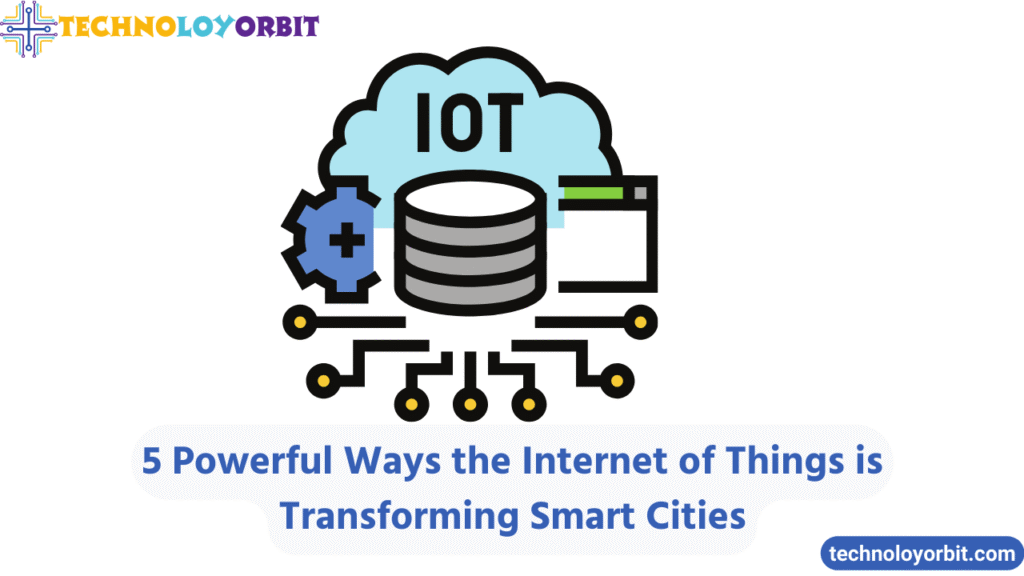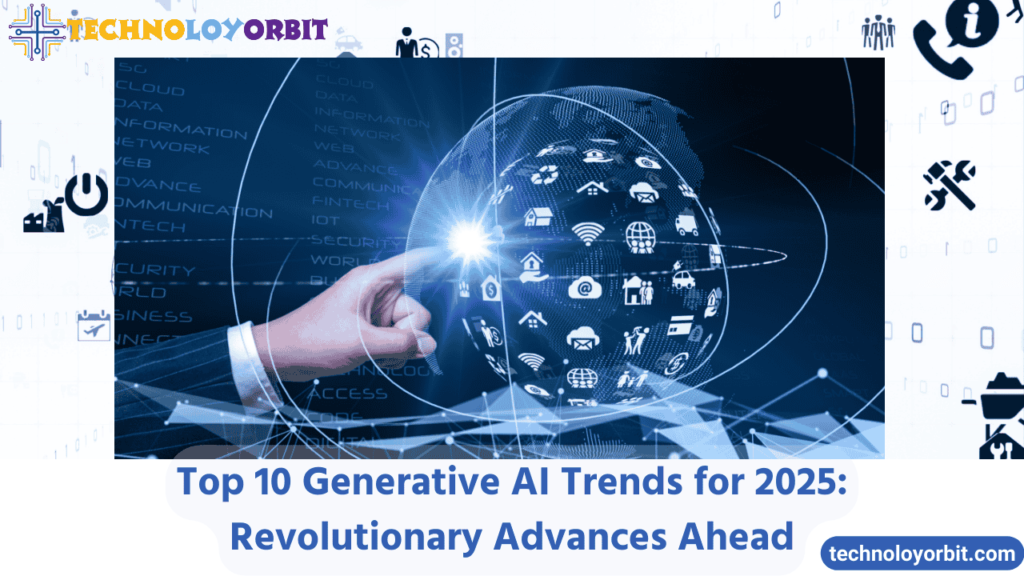The Internet of Things enhances smart cities by optimizing traffic, waste management, energy use, and public safety, creating more efficient, sustainable, and connected urban environments.
The Internet of Things (IoT) has emerged as a game-changer for urban development, playing a pivotal role in the evolution of smart cities. In a rapidly urbanizing world, where over half of the global population resides in cities, the need for efficient, sustainable, and technologically advanced solutions to urban challenges has never been more urgent. IoT, the network of interconnected devices capable of collecting and exchanging data, provides a promising solution to these challenges. By leveraging IoT technologies, smart cities can enhance the quality of life for their residents, improve environmental sustainability, and boost operational efficiencies across various sectors.
In this article, we will explore how IoT is transforming cities into intelligent hubs, contributing to the development of smarter, safer, and more efficient urban environments. From traffic management and waste disposal to energy conservation and public safety, the potential applications of IoT in smart cities are vast and transformative.
The Foundation of Smart Cities: What is IoT?
The Internet of Things (IoT) refers to the interconnectivity of everyday objects and devices through the internet. These devices communicate and share data with each other, making them smarter and more efficient. In the context of smart cities, IoT refers to a vast network of sensors, devices, and systems embedded in the city’s infrastructure, collecting real-time data to optimize urban operations and enhance the living experience for residents.
The core components of an IoT system in a smart city include sensors (to gather data), actuators (to take actions based on the data), connectivity (to share data between devices), and a central system to process and analyze the collected data. The integration of IoT enables seamless communication across devices, resulting in optimized performance, real-time decision-making, and improved urban planning.
IoT Applications in Smart Cities: Transforming Urban Living

The Internet of Things is revolutionizing various aspects of urban life, from transportation and healthcare to energy management and waste management. Below are some of the key areas where IoT is playing a significant role:
1. Smart Traffic Management
One of the most pressing challenges in modern cities is traffic congestion. IoT-powered solutions help alleviate this problem by enabling smart traffic management systems. Sensors embedded in roads and traffic lights collect data on traffic flow, vehicle density, and road conditions. This data is transmitted in real-time to a central system that adjusts traffic signals, reroutes vehicles, and even provides drivers with optimal routes through mobile apps.
Smart traffic systems also contribute to reducing fuel consumption and lowering carbon emissions. By optimizing traffic flow and reducing idle times, these systems help minimize air pollution and enhance overall city mobility.
2. Waste Management and Sustainability
IoT plays a crucial role in the efficient management of waste in smart cities. Traditional waste management systems often face challenges in tracking waste collection schedules and monitoring trash levels in bins. By using IoT-enabled smart bins that are equipped with sensors, cities can monitor waste levels in real-time and schedule collections accordingly. This not only ensures timely waste disposal but also helps in optimizing collection routes, reducing fuel consumption, and minimizing operational costs.
Furthermore, IoT solutions are being used for waste recycling, ensuring that materials are properly segregated and disposed of to maintain the city’s environmental sustainability.
3. Smart Energy Management
With energy consumption on the rise in urban areas, IoT-based energy management solutions are becoming increasingly important. Smart meters, sensors, and connected devices are used to monitor energy consumption in real-time. This data is analyzed to optimize energy use, identify inefficiencies, and reduce wastage. For instance, smart buildings and homes can automatically adjust lighting, heating, and cooling based on occupancy and environmental conditions, reducing energy consumption and lowering utility costs.
Additionally, IoT enables better integration of renewable energy sources, such as solar and wind, into the grid. By gathering data from smart grids, cities can manage energy distribution more efficiently and ensure a more sustainable power supply.
4. Enhancing Public Safety
In a smart city, public safety is a top priority. IoT is helping cities monitor crime and prevent accidents through intelligent surveillance systems. Connected cameras, sensors, and drones can monitor public spaces, detect suspicious activities, and send real-time alerts to law enforcement agencies. IoT-enabled emergency systems, such as smart streetlights and fire alarms, can also provide immediate responses in case of emergencies, significantly reducing response times and saving lives.
Additionally, IoT is being utilized for disaster management. Sensors installed in key infrastructure such as bridges, dams, and buildings can detect signs of wear and tear, preventing potential failures and disasters.
5. Smart Healthcare Systems
Healthcare is another area where IoT is making a profound impact. IoT-powered health monitoring devices can track patients’ vital signs and send real-time data to medical professionals. This allows for timely intervention and more personalized treatment plans, reducing the burden on hospitals and improving patient outcomes. Additionally, IoT enables remote patient monitoring, reducing the need for in-person visits and ensuring continuous care.
IoT applications in healthcare also extend to smart hospitals, where connected devices monitor equipment and supplies, ensuring they are in working condition and available when needed.
Benefits of IoT in Smart Cities
The integration of IoT into urban infrastructure offers several key benefits for both cities and residents:
- Efficiency: IoT automates various urban processes, improving efficiency and reducing human intervention. This leads to cost savings and faster response times.
- Sustainability: IoT solutions help reduce energy consumption, optimize waste management, and promote sustainable urban living.
- Safety and Security: IoT enables better monitoring of public spaces and infrastructure, improving public safety and security.
- Improved Quality of Life: By optimizing essential services, IoT contributes to a higher quality of life for residents, offering enhanced convenience, safety, and comfort.
Challenges and Solutions in Implementing IoT in Smart Cities

While IoT holds immense promise for smart cities, there are several challenges that need to be addressed to fully harness its potential. Some of these challenges include:
1. Data Privacy and Security
With a vast number of devices collecting sensitive data, ensuring privacy and security is paramount. Hackers could exploit vulnerabilities in IoT devices to breach personal information and disrupt city systems. To mitigate this risk, cities must implement robust security protocols, including encryption, multi-factor authentication, and regular system updates to safeguard data.
2. Interoperability
Different IoT devices and systems often operate on various platforms and protocols, leading to compatibility issues. To overcome this challenge, cities need to standardize IoT technologies and encourage collaboration between manufacturers, software developers, and government agencies.
3. Infrastructure and Investment
Building a smart city requires significant investment in infrastructure, including high-speed internet networks, sensor installations, and data management systems. Public-private partnerships can play a key role in financing these projects, ensuring long-term sustainability and scalability.
4. Scalability
As cities grow, IoT systems must be scalable to accommodate an increasing number of devices and services. Cities need to plan for future growth, ensuring that their IoT systems can expand seamlessly as the urban population and infrastructure evolve.
FAQs: Understanding IoT in Smart Cities
- What is the Internet of Things (IoT) in smart cities? The Internet of Things (IoT) in smart cities refers to the network of connected devices and sensors that collect and exchange data to improve urban operations and services.
- How does IoT improve traffic management in cities? IoT enhances traffic management by using sensors and smart traffic signals to monitor traffic flow, optimize routes, and reduce congestion.
- What are the benefits of IoT in healthcare within smart cities? IoT in healthcare enables real-time monitoring of patients’ health, improving care delivery, reducing hospital visits, and providing timely interventions.
- How can IoT help in reducing energy consumption in smart cities? IoT-based systems monitor and manage energy usage in buildings and infrastructure, adjusting energy consumption based on real-time data to minimize wastage.
- What are the key challenges in implementing IoT in smart cities? The main challenges include data privacy and security concerns, interoperability between devices, high infrastructure costs, and scalability as cities grow.
- Is IoT the future of urban living? Yes, IoT is shaping the future of urban living by enabling cities to be more efficient, sustainable, and safer for residents.
- How does IoT contribute to sustainability in smart cities? IoT helps in optimizing waste management, energy consumption, and water usage, making cities more environmentally sustainable.
Conclusion: The Future of IoT in Smart Cities
The Internet of Things is the backbone of the smart city revolution. With the rapid growth of urbanization, IoT offers innovative solutions to create more efficient, sustainable, and livable cities. While challenges remain, the potential for IoT to transform urban environments is immense, providing a smarter and more connected future for city dwellers. By investing in IoT technologies and addressing key obstacles, cities can pave the way for a new era of urban living, where technology and infrastructure work seamlessly together to create a better, more sustainable world. Please follow out blog Technoloyorbit.



